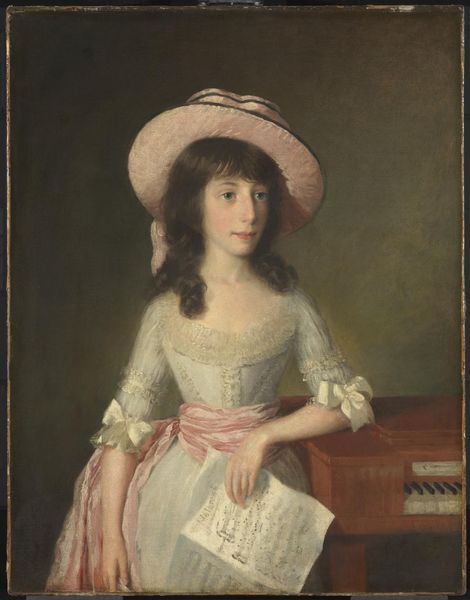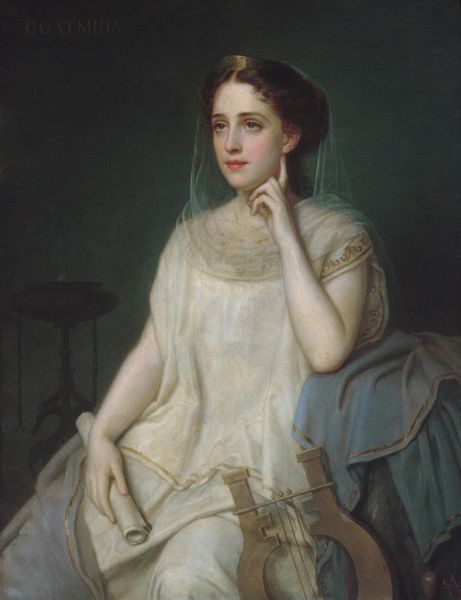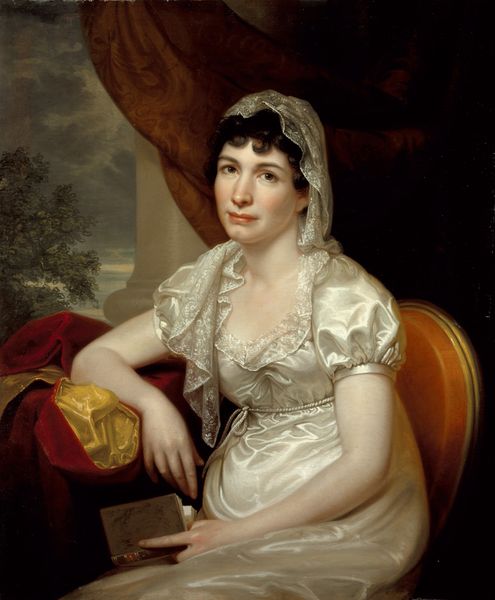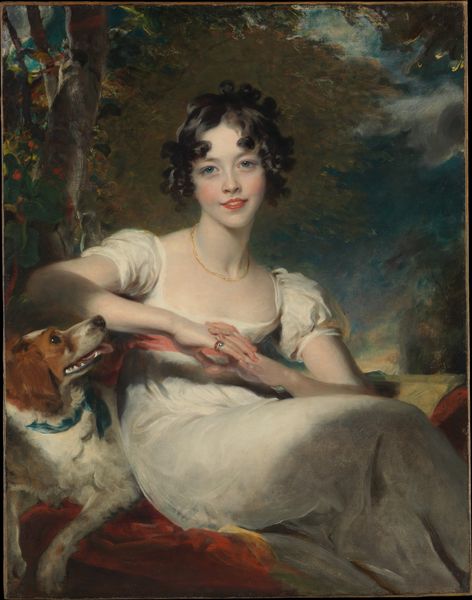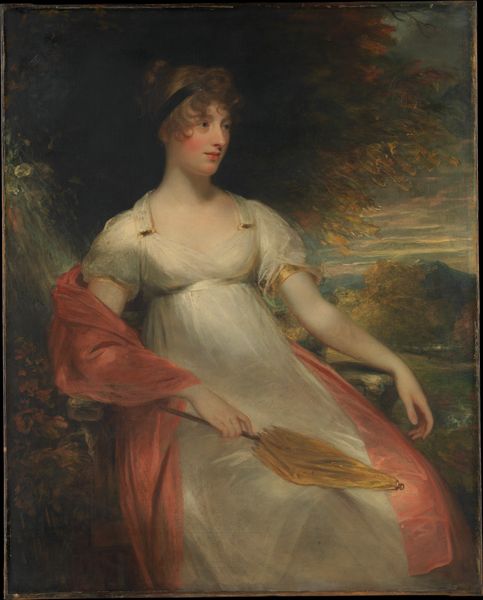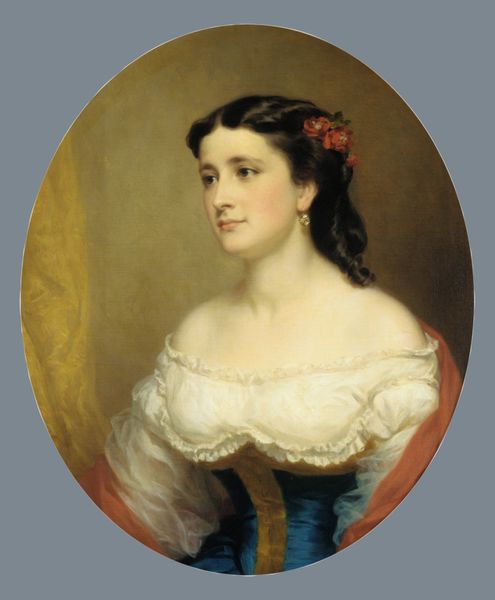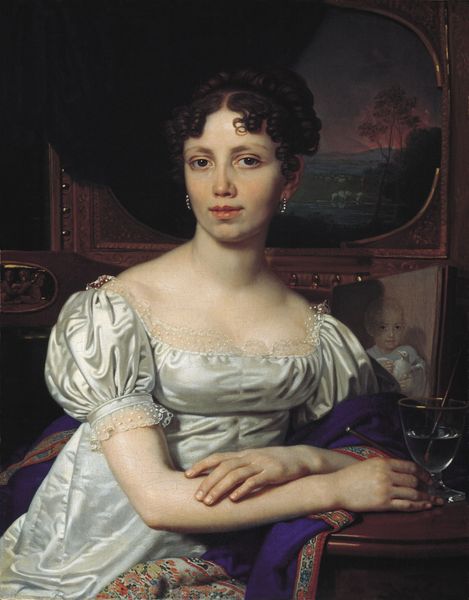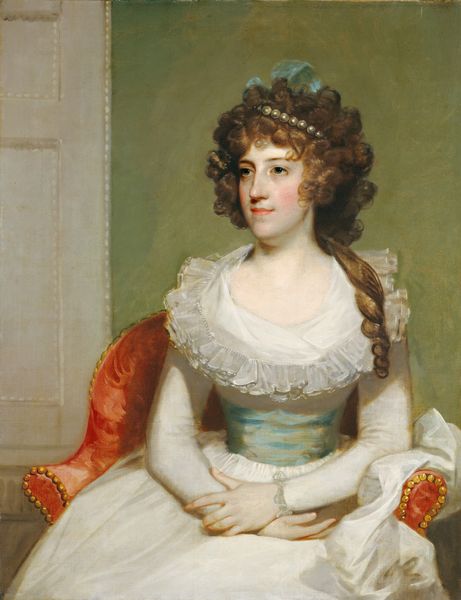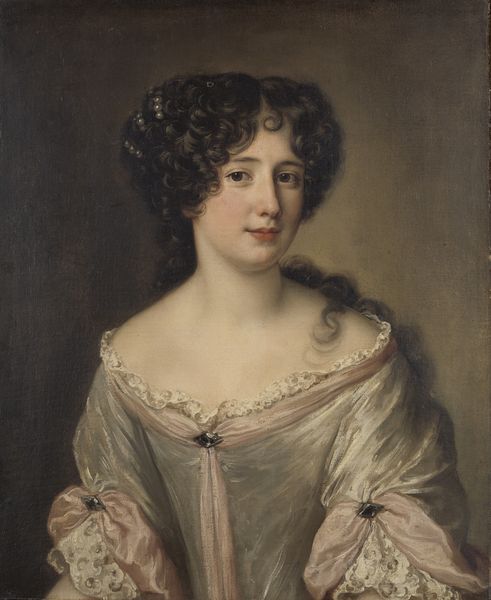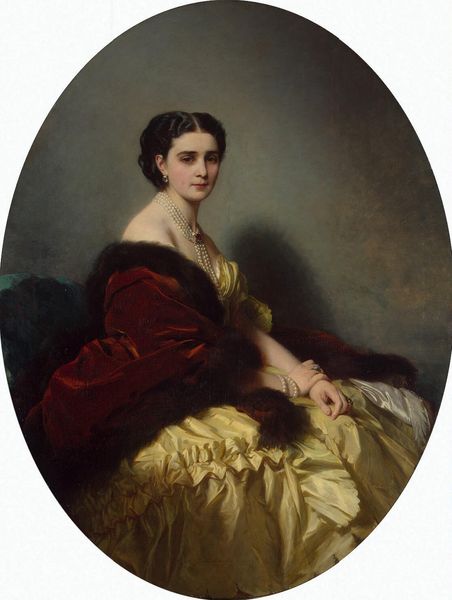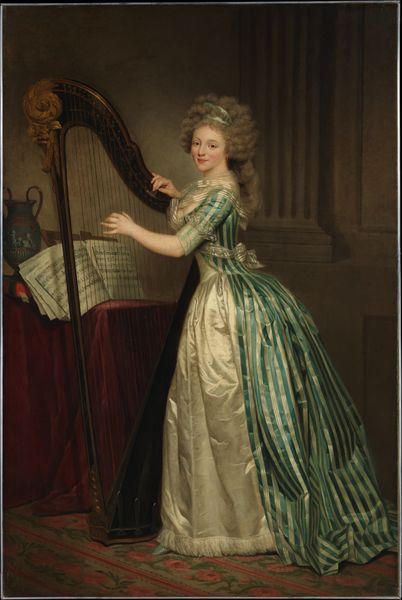
painting, oil-paint
#
portrait
#
painting
#
oil-paint
#
classical-realism
#
figuration
#
romanticism
#
genre-painting
Dimensions: 50 x 40 1/4 in. (127 x 102.2 cm)
Copyright: Public Domain
Curator: Mather Brown painted this "Portrait of a Young Woman" in 1801. The subject sits beside a fortepiano, a roll of music clutched in her hand. My immediate impression is of delicate stillness; the artist masterfully uses light and shadow to focus the viewer's gaze directly on her. Editor: It's certainly pretty, in that classically stifled way of representing women, especially through musical performance. One wonders about the extent of her agency. Was music truly her passion, or simply another attribute of refined domesticity, part of her marriageability? Curator: Considering the time period, it is more likely the latter. Observe the controlled, balanced composition and the idealized features of her face. The formal elements communicate restraint, mirroring societal expectations of women. Note also the subtle asymmetry—the instrument isn't centered behind her. Editor: Exactly! Her connection to that musical instrument seems less about personal expression and more about performance, perhaps even a transaction. Did possessing such skill make a woman more marketable? Look at the folds of her white dress. Though beautiful, the fabric also somewhat shrouds her, concealing individuality. Curator: The white dress, with its subtle neoclassical influence, emphasizes the aesthetic ideals of the era, but I see what you mean. There's a sense of imposed purity, literally white-washed into this young woman's presentation, reflecting, as you said, the values projected onto women. Her modest posture and attire enhance that notion. Editor: We can examine what might be absent. Are there indications of professional pursuits or independent thought? We're left contemplating her role as wife, mother, caretaker. The open sheet music hints at talent. If cultivated, might that have led her to compose, not just play? Curator: A counter-argument could be made based on her direct gaze, a challenging stare that is very slight, however, it communicates a presence that counters total passivity, wouldn’t you say? Editor: Perhaps we project that. Maybe the intention of the portrait was about control—displaying what the sitter *should* be more than what she *was*. Regardless, that open music score hints at latent creativity within her—a space to reflect on a changing status for women during this age. Curator: Looking at the work together, I now see a narrative far deeper than originally anticipated, making her story one that needs revisiting through this contextual lens. Editor: Yes, it seems her representation inadvertently allows us a small but potentially powerful glimpse into societal restraints through art.
Comments
No comments
Be the first to comment and join the conversation on the ultimate creative platform.
